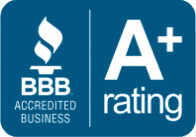Have you been ARRESTED or contacted by the Police, a Detective, FBI, or CPS?
Criminal Defense Attorney for Prohibited Weapons Possession in Los Angeles
Prohibited Weapons in Los Angeles
The Second Amendment of the U.S. Constitution grants American citizens the right to bear arms. This means U.S. citizens can possess, own, purchase, and use firearms (as well as certain other weapons). However, California stringently restricts such weapons that a person can own, purchase, or possess. Some weapons are entirely prohibited under the state’s laws.
See Judicial Council of California’s Criminal Jury Instruction (“CALCRIM”) “Illegal Possession, etc., of Weapon”: CALCRIM Number 2500;“Carrying Concealed Explosive or Dirk or Dagger — Pen. Code §§ 21310, 16470”: CALCRIM Number 2501; and“Possession, etc., of Switchblade Knife — Pen. Code § 21510”: CALCRIM Number 2502.
What Are Prohibited Weapons?
Prohibited weapons are weapons deemed inappropriate for general use and possession. Penal Code § 16590 lists the weapons prohibited in California.
They include:
1. Prohibited martial arts weapons:
- Shurikens, Code § 22410; and
- Nunchakus, Code § 22010.
See Prohibition against Making, Importing, Selling, Giving, or Possessing a Shuriken – a.k.a. “Ninja Stars”, “Throwing Stars”, and “SHURs” (California Penal Code section 22410); and
Prohibition against Making, Importing, Selling, Giving, or Possessing a Nunchaku – a.k.a. “Nunchucks” (California Penal Code section 22010).
2. Prohibited swords/knives:
- Writing pen knives, Code § 20910;
See California Penal Code section 20910.
- Shobi-Zeus, C. section 20710;
See Prohibition against Making, Importing, Selling, Giving, or Possessing a Wallet Knife — a.k.a. “Shobi-Zue” or “SZ” (California Penal Code section 20710).
- Air gauge knives, Penal Code section 20310;
See Prohibition against Making, Importing, Selling, Giving, or Possessing an Air Gauge Knife – a.k.a. “AGK” (California Penal Code section 20310).
- Cane swords, Penal Code section 20510;
- Lipstick case knives, Code § 20610;
- Belt-buckle knives, Code § 20410; and
- Ballistic knives, Code § 21110.
See California Penal Code section 20510 (cane sword);
California Penal Code section 20610 (lipstick case knife – a.k.a. “LCK”);
California Penal Code section 20410 (belt-buckle knife); and
California Penal Code section 21110 (ballistic knife – a.k.a. “BK”).
3. Prohibited ammunition, equipment firearm, and explosives:
- Multi-burst trigger activators, per Pen. Code § 32900;
- Bullets that have explosive agents, Pen. Code § 30210;
- Camouflaging gun containers, per Pen. Code § 24310;
- Flechette dart or ammunition containing flechette darts, Pen. Code § 30210; and
- Any concealed volatile agent, except fixed ammunition Pen. Code 19100.
See Prohibition against Making, Importing, Selling, Giving, or Possessing a Multi-Burst Trigger Activator – a.k.a., “Bump Stock” (California Penal Code section 32900);
Possession of Bullets with Explosive Agents (California Penal Code section 30210);
Possession of Camouflaging Firearm Container (California Penal Code section 24310);
Possession of Flechette Dart or Ammunition Containing Flechette Dart – a.k.a. “FD” (P.C. § 30210); and
Possession of Explosive Substance or Any Concealed Volatile Agent, Except Fixed Ammunition (California Penal Code section 19100).
4. Prohibited firearms:
- Zip guns, wallet guns, and cane guns per California Penal Code section 33600, P.C. § 24710, and P.C. § 24410, respectively;
- Unconventional pistols under P.C. § 31500;
See Possession of an Unconventional Pistol — including “Ghost Guns” (California Penal Code section 31500).
- Guns that cannot be easily recognized as firearms, California Penal Code section 24510;
- Undetectable guns, per California Penal Code section 24610: and
- Short-barreled rifles and short-barreled shotguns, per Penal Code section 33215.
See Possession of a Short-Barreled Rifle or Short-Barreled Shotgun — a.k.a. “Sawed-Off Shotgun” (California Penal Code section 33215).
5. Other prohibited weapons:
- Sandbags, billy clubs, batons, sand clubs, slingshots, blackjacks, P.C. § 22210;
See Prohibition against Making, Importing, Selling, Giving, or Possessing a Leaded Cane, Baton, Sandbag, Billy Club, Sap, Sand Club, Slingshot, or Blackjack (California Penal Code section 22210).
- Metal replica grenades/metal military practice grenades, California Penal Code section 19200;
- Leaded canes, P.C. section 22210;
- Brass knuckles/metal knuckles, P.C. § 21810;
See Prohibition against Making, Importing, Selling, Giving, or Possessing Brass Knuckles or Metal Knuckles – a.k.a., “Knuckle Dusters” (California Penal Code section 21810).
- Large capacity magazines (hold more than ten rounds) per California Penal Code section 32310; and
- Carrying concealed daggers or dirks per California Penal Code section 21310.
See also Carrying a Switchblade or Butterfly Knife (California Penal Code section 21510);
“Carrying Concealed Explosive or Dirk or Dagger — Pen. Code §§ 21310, 16470”: CALCRIM Number 2501; and
“Possession, etc., of Switchblade Knife — Pen. Code § 21510”: CALCRIM Number 2502.
Definitions: “Dangerous Weapons” and “Generally Prohibited Weapons”
On the 1st of January 2012, the term “dangerous weapons” under P.C. § 12020 was renamed “generally prohibited weapons” (now P.C. § 16590), and each weapon was ascribed its own individual Penal Code section, as reflected above.
See “Dangerous Weapons” Defined (California Penal Code section 12020); and“Generally Prohibited Weapons” Defined (California Penal Code section 16590).
Illegal Activities Concerning Prohibited Weapons
P.C. § 16950 bars you from owning, possessing, manufacturing, giving out, lending, selling, offering for sale, or importing any “prohibited weapons” as defined therein.
But before the court or jury finds you guilty of violating P.C. § 16590, the prosecuting attorney must prove the following elements beyond any reasonable doubt:
- You possessed, owned, manufactured, caused the manufacture of, sold, kept with intent to sell, exposed/offered to sell, imported, lent, gave, received, or bought a device deemed to be a prohibited weapon;
- You knew you possessed, imported into the state, manufactured, caused the manufacture of, exposed/offered to sell, kept intending to sell, received, bought, lent, or gave the weapon; and
- You knew the item was a prohibited weapon meant for illegal purposes or one that may be utilized for illegal purposes.
The prosecuting attorney does not have to demonstrate that you intended to utilize the device as a weapon for illegal purposes. They only must show that you were aware the object could be used in that manner.
Additionally, the prosecution does not have to prove that the device is in working condition to be utilized as a weapon. And if accused of selling, manufacturing to sell, or possessing to sell a prohibited weapon, the prosecuting attorney must also show that you aimed to sell it.
As regards possession, there are two types — constructive and actual possession. Under actual possession, you hold or can immediately access the prohibited weapon. This includes a scenario where the weapon is on your person, for example, in your shirt’s pocket or something on you, such as your backpack, briefcase, or purse.
Constructive possession concerns a situation where you cannot immediately access the prohibited weapon but have control over it or are entitled to assume its control. For example, having the weapon in your bedside drawer or car trunk.
Certain weapons, situations, and people are exempt from being charged under California Penal Code section 16590.
These include:
- When forensic laboratories possess prohibited weapons.
- When you are turning a prohibited weapon over to the police.
- When unloaded weapons are used in television, video, and movie productions — P.C. § 17720 permits people to use prohibited weapons to film a television program, motion picture, video production, or theatrical production, but only after a valid permit is obtained.
See Firearms Exemption for Employee or Agent of Television Program, Motion Picture, Video Production, or Theatrical Production (California Penal Code section 17720).
If you are at least 21, you can acquire an Entertainment Firearms Permit from the California Department of Justice.
The permit allows you to possess guns for use only as props in a television, theatrical, video, motion picture, or any other entertainment event or production.
- When museums, libraries, and historical societies possess prohibited weapons.
- When a seller/collector of curios or antiques possesses ammunition or a relic firearm.
- When schools that teach martial arts possesses nunchakus, shurikens, batons, etc.
- When prohibited weapons are possessed by or transferred/sold to a law enforcement agency.
The Consequences of Violating Penal Code section 16590
A P.C. § 16590 violation is considered a “Wobbler” (California Penal Code section 17(b)). A wobbler is an offense that the prosecuting attorney can try as a felony or misdemeanor based on the defendant’s criminal history and the circumstances surrounding the charges.
If pronounced guilty of a misdemeanor, the court could fine you up to $1,000 or sentence you to jail for a period not exceeding 12 months. If facing a felony conviction, the judge could fine you not more than $10,000 or sentence you to a prison term of 16 months, two or three years.
Immigration Consequences of Violation PC 16590
Being convicted of a P.C. § 16590 violation will not negatively affect your immigration status. Non-citizens found guilty of an offense can sometimes be labeled inadmissible or be deported. Convictions that can lead to the deportation or inadmissibility of an immigrant are those considered to be aggravated felonies and crimes of moral turpitude.
California courts have established that a P.C. § 16590 violation does not fall under aggravated felonies or crimes of moral turpitude. Therefore, a convicted immigrant will not be deported or classified as inadmissible.
A P.C. § 16590 Violation’s Effect on Gun Rights
Being convicted under P.C. § 16590 can negatively affect your firearm rights. California law provides that anyone convicted of a felony is prohibited from possessing, owning, and purchasing a firearm.
Note that violating P.C. § 16590 can be prosecuted as a felony or misdemeanor. Thus, if you are accused of a felony activity involving a prohibited weapon and are ultimately convicted, you will forfeit your firearm rights.
Defending Against P.C. § 16590 Violation Charges
If charged with manufacturing, selling, or possessing a prohibited weapon, or violating P.C. § 16590 in some other way, an experienced gun and weapon offenses lawyer may be capable of arguing several defenses for you. These defenses include:
Criminal Defense
Menu










Illegal Search and Seizure
Most charges under P.C. § 16590 arise after the police stop a person and conduct an investigation, followed by a search. However, know that the police cannot search your person or property, or seize your property, in the absence of a judge-issued search warrant.
They must have a valid reason (probable cause) to search you or seize your property if they lack a search warrant. Should the police collect evidence after an illegal search and seizure, the evidence can be struck from the case, meaning the charges may be reduced or even dismissed.
See Motion to Dismiss (California Penal Code section 995);
Motion to Suppress Evidence (California Penal Code section 1538.5); and
Fourth Amendment to the U.S. Constitution.
You Did Not Know the Weapon was Prohibited or Could be Used as a Prohibited Weapon for Illegal Purposes
The prosecutor must prove you were aware the item you possessed, sold, or manufactured was a prohibited weapon or could be used as a weapon for illegal purposes. If you were unaware the object was a prohibited weapon or could be utilized as such, the judge or jury should not find you guilty of this offense.
This defense protects innocent, legitimate weapon transporters, who do not know anything about the cargo they are moving, are never told thereof, and do not have any reason to believe it is a prohibited weapon. However, being informed that the object is a prohibited weapon but not seeing it since it is concealed in transport will not act as a legal defense.
If accused of possessing a prohibited weapon, the prosecuting attorney must demonstrate that you knew you had actual or constructive possession of the weapon. For example, someone may have placed the weapon in your backpack, purse, or even your trouser pocket, and you did not notice. If you can prove you were unaware you had the weapon, the judge or jury should not find you guilty of a P.C. §16590 violation.
The Item was Not a Prohibited Weapon
The prohibited weapons list under P.C. § 16590 is fairly straightforward. Therefore, if the item you sold, manufactured, or possessed does not have the features of any of the prohibited weapons mentioned above, the judge or jury should not convict you of this offense.
You are Authorized to Handle Prohibited Weapons, or You are an Exempt Party
Some weapons listed under California Penal Code section 16590 can be manufactured, possessed, or sold under strict conditions. For example, although nunchakus are prohibited weapons, P.C. § 22015 allows schools that teach self-defense or martial arts to possess them.
See Prohibited Weapons Exemption for Martial Arts or Self-Defense Instructor (California Penal Code section 22015).
The same Penal Code section also allows the sale and manufacture of nunchakus to these schools. You also cannot be convicted of a P.C. § 16590 violation if you fall under any of the exempt groups of people mentioned above.
Insufficient Evidence
The prosecution must prove all the elements of P.C. § 16590 violation beyond any reasonable doubt. If it fails to prove even a single element to the law’s satisfaction, that would be grounds to argue inadequate evidence as a defense.
Also, if your attorney can successfully poke holes in the prosecution’s evidence, it would cast doubt in the judge or jury’s minds, which could lead to a charge dismissal.
Prosecutorial Misconduct
The prosecution team’s role is to present evidence that you are undoubtedly guilty of the charges against you. It should convince the jury and judge beyond any reasonable doubt to find you guilty only based on the available evidence.
The prosecuting attorney should never try to influence the judge or jury to convict you unfairly. That would be prosecutorial misconduct. If your lawyer can prove any prosecutorial misconduct, the judge can dismiss the charges against you or lower your sentence.
Momentary Possession
In a situation where you were accused of possessing a prohibited weapon, you could argue momentary possession as a defense. Briefly possessing a prohibited weapon is not an offense. It could be that you had the weapon temporarily with the intent to turn it over to the authorities.
Police Misconduct
Police misconduct during arrest or investigation into your case may result in a dismissal of the charges against you.
Police misconduct may include:
- Discovering the prohibited weapon in an illegal search.
- Planting or fabricating evidence.
- Coercing a confession.
- Any other conduct that violates your constitutional rights.
Police Entrapment
You can argue the entrapment defense if you establish that the police lured, coerced, or convinced you into illegal conduct. The state’s criminal law presumes that any ordinary, sensible party will resist committing an offense absent extraordinary circumstances.
For example, suppose you run an antique store. An undercover police officer requests that you give them a belt-buckle knife. You refuse, but they insist for several days until you finally agree to their request so that they can stop standing in the way of your business. The court should not convict you of P.C. § 16590 violation since you did not willingly participate in the offense.
But if the police officer asks you for the belt-buckle knife and you do not have it but offer to find one for them, you have initiated the offense, thereby rendering yu culpable
Carrying a Prohibited Weapon to Scare Attackers Away Does Not Qualify as a Defense
Whereas your intention could be to display the weapon solely for self-defense, P.C. § 16590’s purpose is to safeguard people from coercion or fear that might be caused by seeing that kind of weapon.
For example, a robber enters a convenience store carrying an inoperable sawed-off shotgun. The clerk at the counter is unaware the robber cannot fire the shotgun, so they still empty the register upon the robber’s order. Reducing this kind of coercion and fear is one reason these weapons are banned.
See also Armed Robbery/Second-Degree Robbery (California Penal Code section 212.5( c ));
Personal Use of a Dangerous Weapon During the Commission of a Felony (California Penal Code section 12022); and
Personal Use of a Firearm During a Felony (California Penal Code section 12022.5).
Conviction Record Expungement
You can expunge your P.C. § 16590 conviction. An expungement is possible, provided you successfully serve your jail sentence and/or probation term, whichever is applicable. A conviction record expungement is beneficial because it eliminates most of the challenges of a conviction.
See Expungement (California Penal Code section 1203.4).
See also Felony Reduction to a Misdemeanor (California Penal Code section 17(b)); and
Early Termination of Probation (California Penal Code section 1203.3).
Crimes Related to P.C. section 16590 Violation
Three offenses are related to unlawful acts with prohibited weapons because they share various elements. As a result, the prosecutor can charge you with these crimes alongside or instead of a P.C. § 16590 violation. The crimes are:
Publicly Carrying an Unloaded Gun (California Penal Code section 26350)
P.C. § 26350 is the state’s law criminalizing the carrying of an unloaded gun openly and doing so publicly. Note that carrying an unloaded firearm in a private residence is legal.
Violating P.C. § 26350 is considered a misdemeanor. A conviction will subject you to a fine not exceeding one thousand dollars and custody in jail for a maximum of one year.
You could be subject to a fine and jail term if you had also been carrying unexpended, dischargeable ammunition and were not the legal owner of the firearm. Additionally, the above charge applies to every unloaded firearm you carry.
See also “Carrying Loaded Firearm: Not Registered Owner — Pen. Code § 25850( c )(6)”: CALCRIM Number 2545; and
“Carrying Concealed Firearm: Not Registered Owner and Weapon Loaded — Pen. Code § 25400( c )(6)”: CALCRIM Number 2546.
Publicly Carrying a Loaded Firearm (California Penal Code section 25850(a))
P.C. § 25850 is the state’s law that criminalizes carrying a loaded gun in a car or in public. Remember that you will be convicted of violating this statute while doing so with any gun. Additionally, the weapon needs not be prohibited per P.C. § 16590.
A simple P.C. § 25850 violation is deemed a misdemeanor. The consequences include up to one thousand dollars in fines and custody in jail for a period not exceeding one year. However, certain aggravating circumstances can cause a P.C. § 25850 violation to be charged as either a straight felony or a wobbler. You will also be ordered to serve a jail term of at least three months if you have particular priors.
See also Carrying an Exposed and Unloaded Handgun in a Public Place or in a Vehicle (California Penal Code section 26350); and
“Carrying Loaded Firearm — Pen. Code § 25850(a)”: CALCRIM Number 2530).
Brandishing a Weapon (California Penal Code section 417(a)(1)&(2))
P.C. § 417 is the state’s law that describes the criminal offense of brandishing a weapon. This crime is defined as exhibiting or drawing a firearm or deadly weapon, or using any deadly weapon in a fight. This law does not only apply to firearms. It also applies to objects that are deemed deadly weapons.
Most P.C. § 417 violations are misdemeanors. The consequences upon a conviction are a county jail sentence for a period not exceeding one year.
See also “Brandishing Firearm or Deadly Weapon: Misdemeanor — Pen. Code § 417(a)(1)&(2)”: CALCRIM Number 983; and
“Brandishing Firearm: Misdemeanor – Public Place — Pen. Code § 417(a)(2)(A)”: CALCRIM Number 984.
"Ninaz is highly professional, organized, and talented."
RobertClient
"I always refer to Ninaz Saffari as a fighter in the courtroom. I walked out of court a free-man due to this attorney's hard work and know-how."
Kevin F.Client
"She not only makes you feel comfortable but she is very competent and experienced in pretty much any kind of situation and scenario. I feel very lucky to know her."
AddyClient